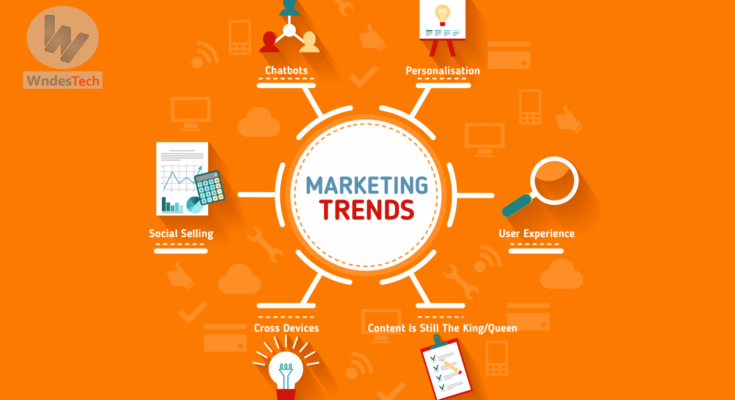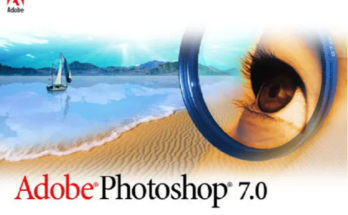The creative economy is growing and proving its worth in the global business world. U.S. companies are expected to spend $7.14 billion on content marketing this year, according to Sprout Social. There’s no denying that marketing is expensive right now. Whether you work as a marketer, artist, or brand manager, here are five key industry trends this year:
1. Consumer Shift to Authentic Content
Consumers are increasingly frustrated with traditional marketing tactics and prefer original content over well-crafted content. According to recent data from Forrester, 71% of US consumers think they can live with real companies and want to support them. This trend is evident with the rise of makers and influencers on social media.
Real-life moments and unedited photo shoots take the form of well-planned Instagram moments. It’s clear how much things have changed since Hailey Bieber’s strong mother Jaclyn Gibson. Real stories and simple stories are becoming increasingly important for brands to connect with consumers.
2. Rise of UGC Creators as a Profession
User-generated content (UGC) is starting to take shape as a real profession. The pandemic has accelerated the rise in demand for premium products, causing them to become more restrictive. The development of the short video content market on social media platforms such as Instagram Reels and TikTok has led to the emergence of a new class of creators known as UGC Creators. These people are changing the way videos are made beyond the usual video production process to make interesting things.
A new generation of UGC creators are sharing advice on posting affiliate links on platforms like TikTok, and the best of the best are offering their shot at success. Titled “How I Made $4,000 in 10 Hours” and “How to Become a UGC Content Creator by 2024,” these videos feature experienced UGC contributors who make a living providing content exclusively for businesses. UGC creators don’t need a large following like traditional influencers; advertisers are working with them solely because of their creative talent. With barriers to entry low and platforms like Cohley and Aspire connecting people and businesses, UGC careers are booming.
3. In-House Content Creation: A Strategic Advantage
Leave your problems behind! Companies work with in-house content creators and social media developers to handle content development. Outsourcing can be difficult and requires time-consuming processes such as talent identification and innovation. Reforms often struggle if the developer doesn’t keep his word the first time. Companies with in-house social media and content creators will be at the forefront.
Cisco, for example, uses its pages as a recruiting tool and lists over 84,000 of its employees as ‘talent’ on LinkedIn. It is led by Cisco CEO Kelly Jones, who believes people are more important than business. Just as consumers prefer products recommended by influencers or their peers, job seekers often choose to refer to a company when they hear positive reviews from its employees. Considering that 57% of job seekers use social media to find new opportunities, appointing employees as brand ambassadors makes sense.
Mall cracker brand Auntie Anne’s has a huge presence on TikTok, thanks to its creator. This creative responds quickly to events, using social media to ensure the brand remains relevant to the target group. When they start to take notice, housewives are offering unique benefits and providing consistent content online. Aware that no one knows the brand better than its employees, the product goes through quality control.
4. Creator-Led Campaigns: Shifting Marketing Trends
The appeal of paid ads is waning. In my twelve years as a social media manager, I have discovered that brands make the most money from paid advertising through partner-led campaigns. This trend sees brands working directly with creators or through specialist agencies, such as those managing TikTok campaigns, to increase awareness and business engagement. Additionally, they officially endorse and promote titles through their “List” channel. This benefits stakeholders and the brands they work with.
Creator-led advertising is more than just fashion; It represents a radical change in the way brands interact with consumers online. This is supported by Creative IQ data, which highlights how successful and effective the campaign was compared to traditional advertising. Similarly, Aspire’s report identified a clear trend: 69% of marketers plan to increase their marketing investments by 2024. The change is clear: partnering with
companies delivers a return on investment and reduces customer acquisition costs as they grow. advertising costs and reduced visibility.
Now is the time for marketers, small business owners, and entrepreneurs to turn to creative campaigns like social media marketing products. It is important to understand this trend and adapt to it to stay one step ahead in the ever-changing world of marketing in 2024.
5. Affiliate Program Revolution: Brands’ New Approach
This year, brands need to prepare for revolutionary changes to their affiliate programs. Although the affiliate market continues to grow at 10 percent annually, it is expected to reach $40 billion by 2030. Gone are the days when we relied solely on coupon sites; Instead, brands are making decisions by creating affiliate programs that increase customer loyalty.
Consider SlumberPod, the DTC brand that appeared on Shark Tank. A variety of creators, including parents, counselors, and sleep coaches, are part of their program. They all work with a partnership agreement for free product exchange. The brand has developed a successful revenue stream since launching its program. Half of the 300+ active creators publish regularly and earn monthly commissions. The success of this income-generating program is evidenced by seven-figure sales generated with the discount code alone. Popular DTC companies like Parade, Coterie, and MVMT also hosted housewife and partner programs that provided key partners with a clear, performance-based design approach. This economic model allows brands to collaborate with communities and target specific demographics while rewarding partners with similar interests. These partnerships, which can be value-based or commission-based, provide benefits that highlight both the partner and the brand.
Conclusion
Marketing will change in 2024. Professionals have fun and quality is more important than perfection. Brands recognize the value of long-term relationships and support advertisers driven by genuine impulses to action. Another trend we see is that companies create innovation teams and expand their partnership programs and ambassadorships over time. To reach the dynamic marketing world in 2024, you need to stay ahead of this trend.
Read more Articles on Wndestech




